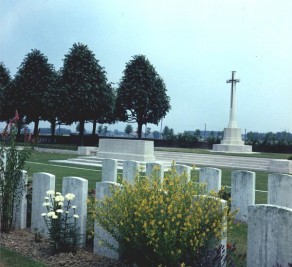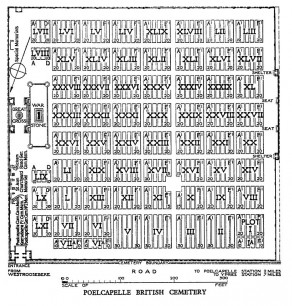Country
Belgium
Locality
Langemark-Poelkapelle, West-V.
Identified Casualties
1248
Visiting Information
Wheelchair access to site possible, but may be by an alternative entrance. For further information regarding wheelchair access, please contact our Enquiries Section on telephone number 01628 507200
Local Information
Poelcapelle British Cemetery is located 10 kilometres north east of Ieper town centre on the Brugseweg (N313), a road connecting Ieper to Brugge. Two streets connect Ieper town centre onto the Brugseweg; Torhoutstraat leads from the market square onto the Kalfvaartstraat. At the end of Kalfvaartstraat is a large junction on which Brugseweg is the first right hand turning. The cemetery itself lies 10 kilometres along the Brugseweg on the right hand side of the road after passing through the village of Poelkapelle.
Historical Information
Poelcapelle (now Poelkapelle) was taken by the Germans from the French on 20 October 1914, entered by the 11th Division on 4 October 1917, evacuated by Commonwealth forces in April 1918, and retaken by the Belgians on 28 September 1918. Poelcapelle British Cemetery was made after the Armistice when graves were brought in from other cemeteries in the area and from the battlefields. The great majority of the graves date from the last five months of 1917, and in particular October, but certain plots (IA, VIA, VIIA, LI and LXI) contain many graves of 1914 and 1915. There are now 7,478 Commonwealth servicemen of the First World War buried or commemorated in Peolcappelle British Cemetery. 6,321 of the burials are unidentified but special memorials commemorate eight casualties known or believed to be buried among them. Other special memorials commemorate 24 servicemen buried by the Germans in other burial grounds in the area whose graves could not be located. There is also one burial of the Second World War within the cemetery. The cemetery was designed by Charles Holden. Among those buried in the cemetery is Private John Condon of the Royal Irish Regiment, who at 14 is thought to be the youngest battle casualty of the First World War commemorated by the Commission.





